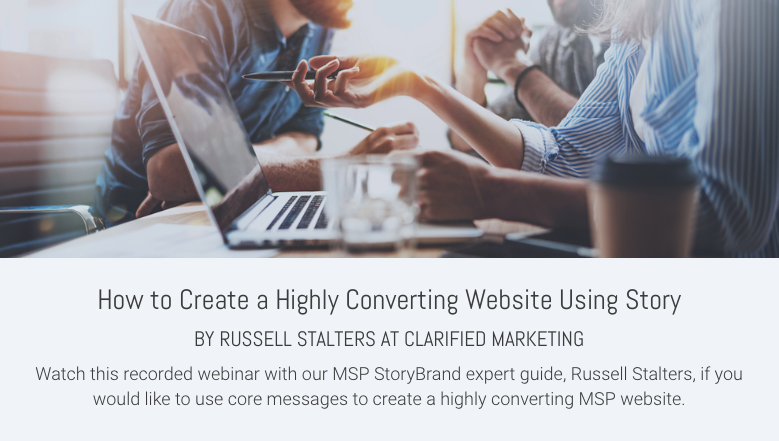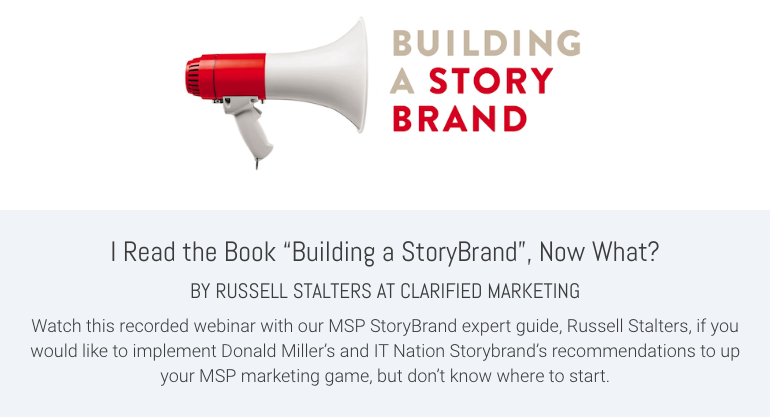How Do I Get Visitors to Engage with My Website?
By Russell Stalters on October 8 2019
How to Do I Get Visitors to Engage with My Website?
I mentioned this in my last Blog post. We live in a very “noisy” world and we need to grab their attention in less than a couple of seconds.
This is true for our website too. People don’t read website content any longer. When someone lands on your homepage they will start skimming the page very quickly to decide if they want to spend more time diving deeper.
“But, they went to my page because we met at a networking event!”
It doesn’t matter.
You have 5-8 seconds to capture their attention. Studies have shown that on a computer web browser people scan the webpage in a Z pattern. Left to right across the top, then down to the lower left and across the bottom of the page before they start scrolling down. We call this area before they scroll down “above the fold” which is an old newspaper term.

So, how do we grab their attention?
When they land on the homepage we have to instantly answer three questions…
- What is the big problem you solve?
- What will my life look like after I buy your product or service?
- How do I buy? or What is the first step in the sales process.
Once we have them hooked and our visitor decides to scroll down we need to tell a story.
Not our story or the story of our company. We need to invite them into their story. A story of transformation.
One of the best ways to create your customer’s story of transformation is to use the StoryBrand methodology as described in Donald Miller’s book “Building a StoryBrand: Clarify Your Message So Customers Will Listen”. As a StoryBrand Guide I help MSPs implement the StoryBrand methodology to attract their ideal clients, get more meetings, and grow their business.
During this session I will provide a blueprint for creating a highly converting website homepage. He will share best practices on how to implement the recommendations from the great book, “Building a StoryBrand”.
I will also provide live feedback and improvement recommendations for attendee’s websites during the webinar.
So, make sure you register here and be ready to get feedback on your website.
How to Make Managed Service Provider Marketing Better
By Russell Stalters on September 11 2019
Here are two ways to make your making better.
Managed Service Providers (MSPs) most often have really complex solutions. One challenge most people in the IT industry suffer is the “curse of knowledge”. The term was coined by Chip and Dan Heath back in 2006 and then they wrote about it in their 2007 book, “Made to Stick: Why Some Ideas Survive and Others Die”. Later, Lee Lefever described practical ways to combat the “curse of knowledge” in his book “The Art of Explanation: Making your Ideas, Products, and Services Easier to Understand”. I highly recommend both of these books to anyone who is marketing and selling IT solutions.
With the curse of knowledge, we know our product or service so well we have a difficult time imagining what it is like to not know it. This seems to be especially true with technical fields and IT professionals. Our technical and inside knowledge interferes with our ability to see the world from another person’s perspective. We wind up talking over the heads of our customers.
Remember we live in a very “noisy” world and we need to grab their attention in less than a couple of seconds. This is an area that many of my clients struggle with.
On a scale of 1 to 10, where 10 is the complexity we as MSPs live day in and day out, and where 1 is super simple, we need to be at a 2 or 3. Most of my clients have their marketing “dumbed down” to a 7 or 8 and our customers will be attracted to and understand messages that are at a 2 or 3. The good news is that after you work on simplifying the way you talk about your solution to your customer’s problem, customers will listen.
We live in a very distracting world. One of the other ways to cut through the noise is through story. Think about it. Until the printing press and the proliferation of books, story was the primary method of communication and passing on information. Story helps cut through the noise by organizing information in a way people will listen. Facts, figures, and features are boring.
Neuroscientists estimate humans spend more than 30% of their time daydreaming. Think about the last time you watched a great movie with a great story – were you daydreaming? We can use story to help our customers see how we can solve their problem and what their life will look like after they buy our product or service.
A list of features or benefits by themselves will not sell your services. Use a story of a customer’s journey from frustration and challenge to success with your solution and services. Every person intuitively understands a good story and is working at living her own story. If your business could understand the story your customers are living in relationship to your brand, you can stop selling products and services and instead invite customers into a story. Their Story. By positioning your company as the guide in your customer’s story, you can more easily speak to your customer’s needs.
One of the best ways to create your customer’s story is to use the StoryBrand methodology as described in Donald Miller’s book “Building a StoryBrand: Clarify Your Message So Customers Will Listen”. As a StoryBrand Guide I help MSPs implement the StoryBrand methodology to attract their ideal clients, get more meetings, and grow their business.




